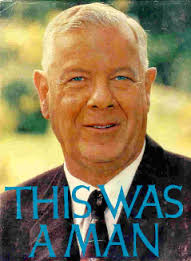Leading Apartheid Ideologue, Professor of Psychology, Editor, and Statesman
By Alistair Boddy-Evans
African History Expert
Updated February 19, 2016.
National Party Prime Minister of South Africa from 1958 until his assassination on 6 September 1966, Hendrik Frensch Verwoerd was the chief architect of ‘Grand Apartheid’, which called for the separation of races in South Africa.
Date of birth: 8 September 1901, Amsterdam, Netherlands
Date of death: 6 September 1966, Cape Town, South Africa
An Early Life
Hendrik Frensch Verwoerd was born to Anje Strik and Wilhelmus Johannes Verwoerd in the Netherlands on 8 September 1901, and the family moved to South Africa when he was barely three months old. They arrived in the Transvaal in December 1901, just six months before the end of the second Anglo-Boer War. Verwoerd proved to be a outstanding scholar, matriculating from school in 1919 and attending the Afrikaans university at Stellenbosch (in the Cape). He enrolled initially to study theology, but soon changed to psychology and philosophy — obtaining a masters and then a doctorate in philosophy.
After a brief sojourn to Germany in 1925-26, where he attended the universities in Hamburg, Berlin and Leipzig, and trips to Britain and the US, he returned to South Africa. In 1927 he was given the post of Professor of Applied Psychology, moving to the chair of Sociology and Social Work in 1933. Whilst at Stellenbosch he organized a national conference on the ‘poor white’ problem in South Africa.
Introduction to Politics
In 1937 Hendrik Frensch Verwoerd became the founding editor of the new Afrikaans nationalist daily newspaper Die Transvaler, based in Johannesburg. He came to the attention of leading Afrikaans politicians, such as DF Malan, and was given the opportunity to help rebuild the National Party in the Transvaal. When Malan’s National Party won the general election in 1948, Verwoerd was made a senator. In 1950 Malan appointed Verwoerd as Minister of Native Affairs, where he became responsible for creating much of the era’s Apartheid legislation.
Introducing grand Apartheid
Verwoerd developed, and began to implement, the Apartheid policies which relegated South Africa’s Black population to ‘traditional’ homelands, or ‘Bantusans”. It was recognized by the National Party government that international opinion was increasingly against Apartheid’s policy of segregation — so it was repackaged as ‘separate development’. (The ‘Grand Apartheid’ policy of the 1960s and 70s.) South African Blacks were appointed to homelands (previously known as ‘reserves’) where it was intended they would eventually gain self-government and independence. (Four of the Bantustans were eventually given a form of independence by the South African government, but this was never recognized internationally.) Blacks would only be allowed to stay in ‘White’ South Africa to fill labor demand — they would have no rights as citizens, no vote, and few human rights.
Whilst Minister of Native Affairs he introduced the Bantu Authorities Act of 1951 which created tribal, regional and territorial authorities to be (initially) run by the Department of Native Affairs. Verwoerd said of the Bantu Authorities Act, that the “fundamental idea is Bantu control over Bantu areas as and when it becomes possible for them to exercise control efficiently and properly for the benefit of their own people.”
Verwoerd also introduced the Blacks (Abolition of Passes and Co-ordination of Documents) Act No 67 of 1952 — one of the major pieces of Apartheid legislation which oversaw ‘influx control’ and introduced the infamous ‘pass book’.
Prime Minister
Johannes Gerhardus Strijdom, who became South Africa’s Prime minister after Malan on 30 November 1954, died of cancer on 24th August 1958. He was briefly succeeded by Charles Robert Swart, as acting prime minister, until Verwoerd took over the post on 3 September 1958. As Prime Minister Verwoerd introduced the legislation which laid the foundations for ‘Grand Apartheid’, he brought South Africa out of the Commonwealth of Nations (because of the overwhelming opposition by its members to Apartheid), and on 31 May 1961, following a national white-only referendum, turned South Africa into a republic.
Verwoerd’s time in office saw a significant change in political and social opposition both within the country and internationally — Harold Macmillan’s ‘Wind of Change’ speech on 3 February 1960, the Sharpeville Massacre of 21 March 1960, the banning of the ANC and PAC (7 April 1960), the beginning of the ‘armed struggle’ and the creation of militant wings of the ANC (Umkhonto we Sizwe) and PAC (Poqo), and the Treason Trial and Rivonia Trial which saw Nelson Mandela and many others sent to jail.
Verwoerd was wounded in an assassination attempt on 9 April 1960, at the Rand Easter Show, by a disgruntled white farmer, David Pratt, following the aftermath of Sharpeville. Pratt was declared mentally disturbed and committed to Bloemfontein Mental Hospital, where he hanged himself 13 months later. Verwoerd had been shot at close range with a .22 pistol and suffered minor injuries to his cheek and ear.
As the 1960s continued, South Africa was placed under various sanctions — partially as a result of UN Resolution 181, which called for an arms embargo. South Africa responded by increasing its own production of military matériel, including nuclear and biological weapons.
Assassination
On the 30th of March 1966, Verwoerd and the National Party once again won the national election — this time with almost 60% of the vote (which converted to 126 out of 170 seats in parliament). The path to ‘Grand Apartheid’ was to continue unabated.
On 6 September 1966, Hendrik Frensch Verwoerd was stabbed to death on the floor of the House of Assembly by a parliamentary messenger, Dimitry Tsafendas. Tsafendas was subsequently judged mentally unfit to stand trial and was held, first in prison and then in a psychiatric facility, until his death in 1999. Theophilus Dönges took the position of acting prime minister for 8 days before the post went to Balthazar Johannes Vorster on 13 September 1966.
Verwoerd’s widow moved to Orania, in the Northern Cape, where she died in 2001. The house is now a museum for the Verwoerd collection.

